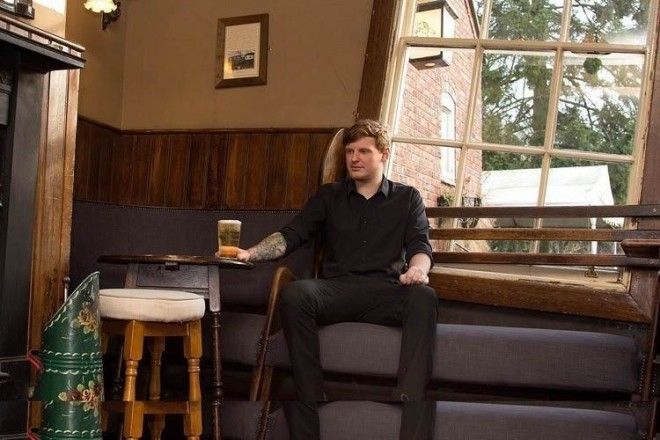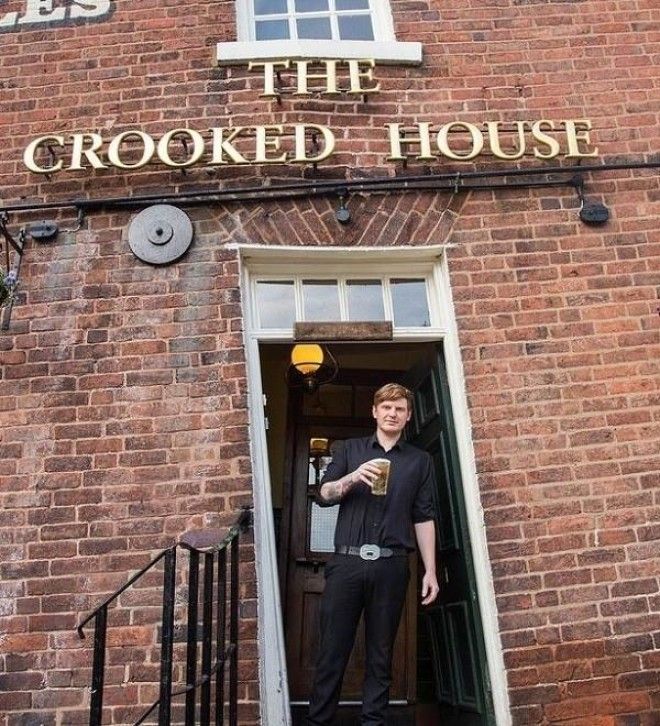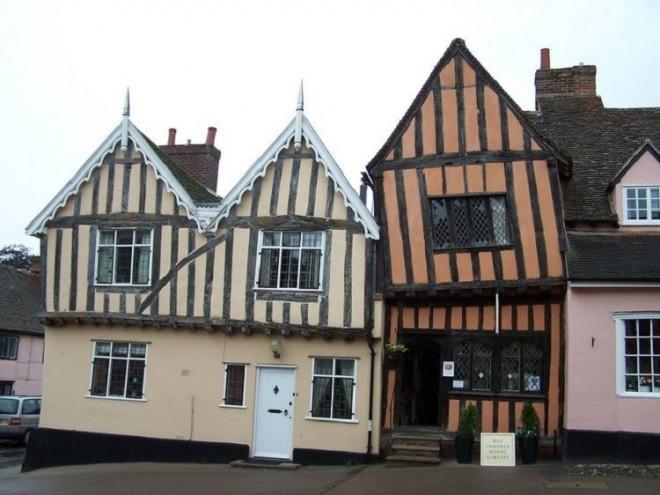In Lavenham, that secret is the green, untreated wood that served as building material in the 1400s and 1500s. At that time, the local wool trade quickly propelled the medieval town into the top 20 wealthiest English settlements. The town’s fast growth forced builders to construct houses with green timber that later dried and warped, bending these crooked houses’ frames into their unique shapes.

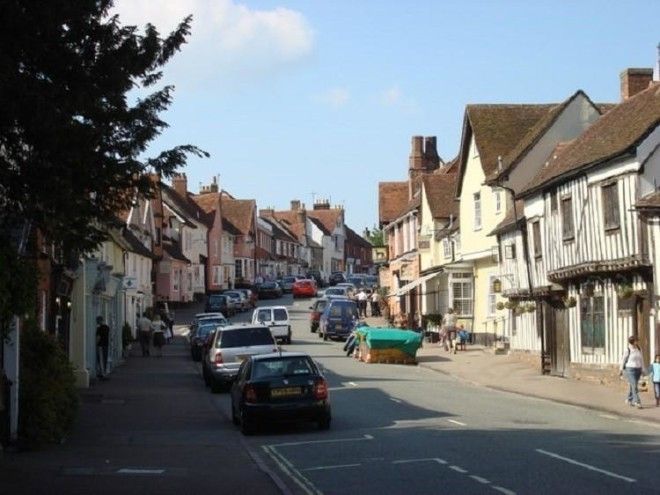
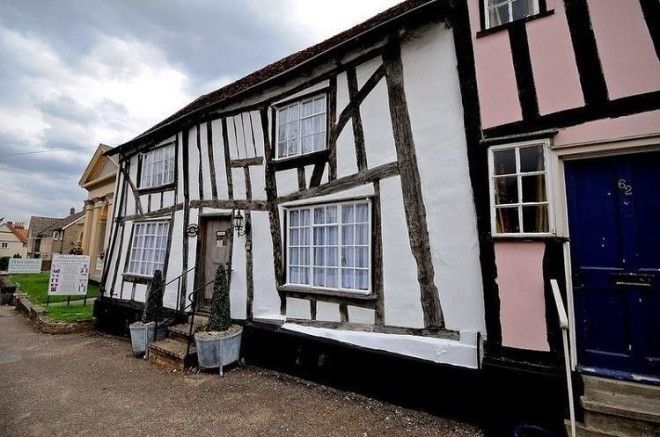
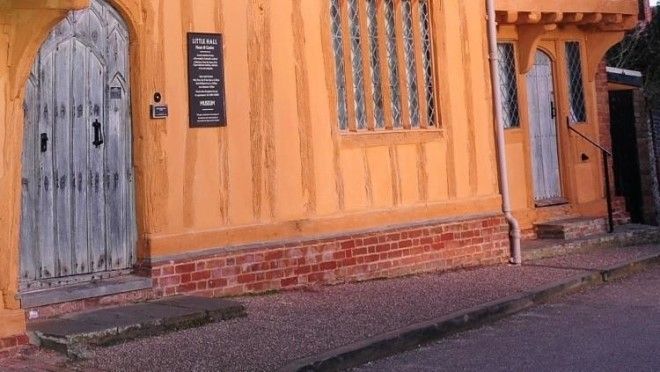
These crooked house are even thought to be the basis for the well-known English nursery rhyme, “There Was A Crooked Man”: There was a crooked man, and he walked a crooked mile. He found a crooked sixpence upon a crooked stile. He bought a crooked cat, which caught a crooked mouse, And they all lived together in a little crooked house.
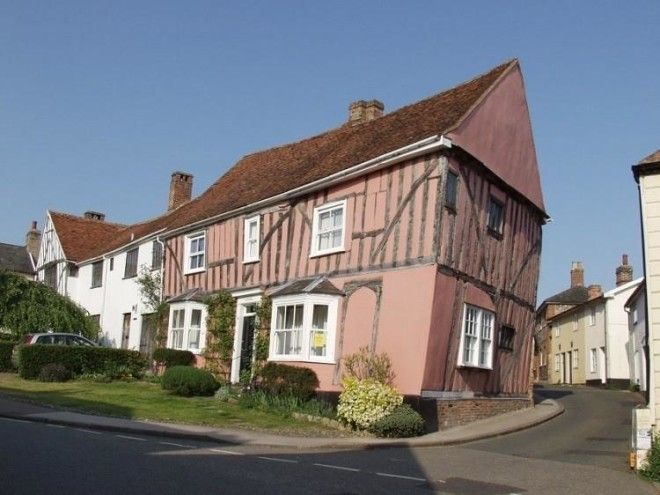
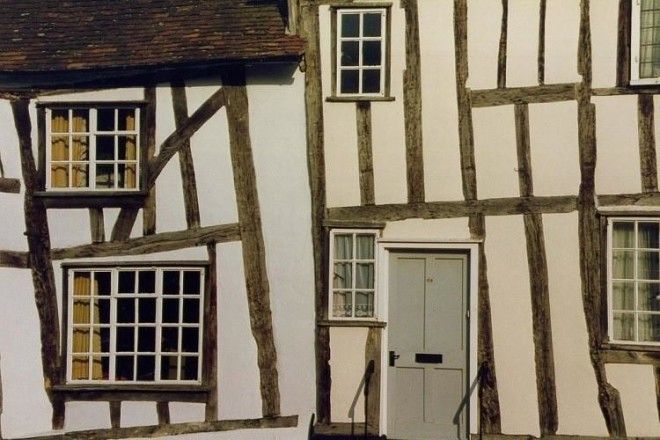
Although that nursery rhyme lives on, Lavenham’s 15 minutes of wool-based fame were over by 1600, as its celebrated blue broadcloth became overshadowed by the cheaper, more fashionable cloth from Dutch colonies in Colchester. Suddenly, the multi-millionaires were gone and their households were left to warp.
The houses might not even be here today if not for Lavenham’s historical significance: In addition to providing wool to medieval England, the town was home to the airfield used by the U.S.’s 487th Bombardment Group in World War II.
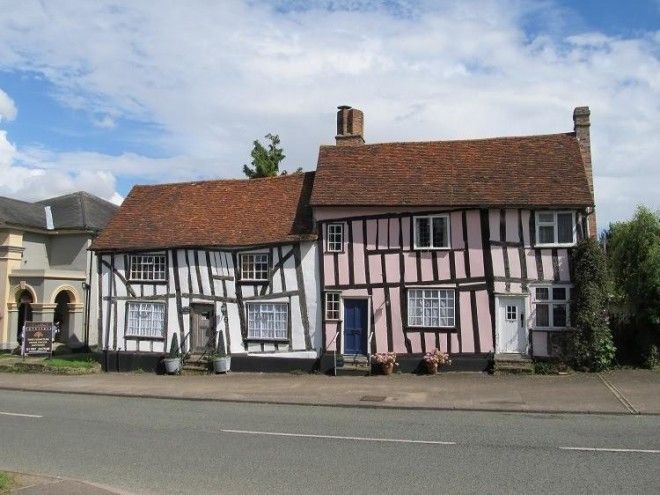


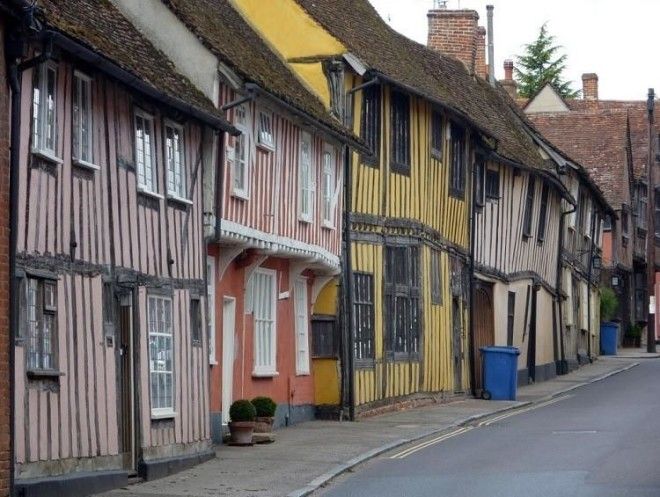
Over the last century, Lavenham was able to turn its historical significance into its saving grace: “When I first came here,” relates Nellie Smith, a 99-year-old Lavenham native, “the buildings were holding each other up.” Since then, the tourism economy has breathed new life into the village packed with England’s most crooked houses. England’s most crooked pub, however, is located elsewhere…
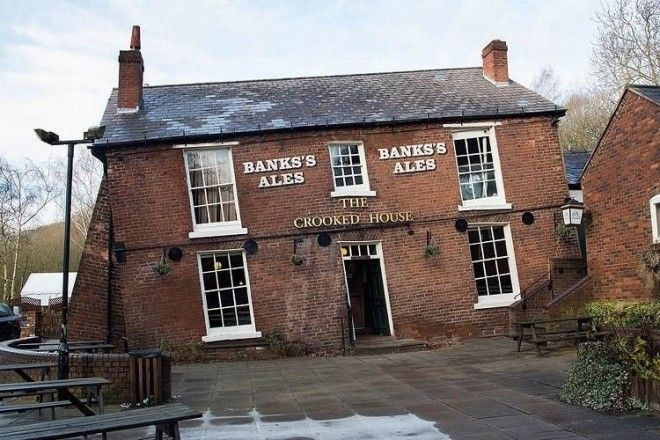
The Crooked House—a self-described “quirky higgledy-piggledy old world pub”—was originally built as a farmhouse in 1765. But after a local mining operation in the 1800s, the building sank into the earth on one end. One side of the building is now a whopping four feet lower than the other.

The building was understandably condemned in the 1940s, but was rescued with a few well-placed girders and buttresses, courtesy of Wolverhampton and Dudley Breweries (now Marston’s). Today, The Crooked House serves local ales and rustic food. A pub is a natural fit for a tilted building—though the bartenders might be tired of the “tipsy pub” jokes by now.
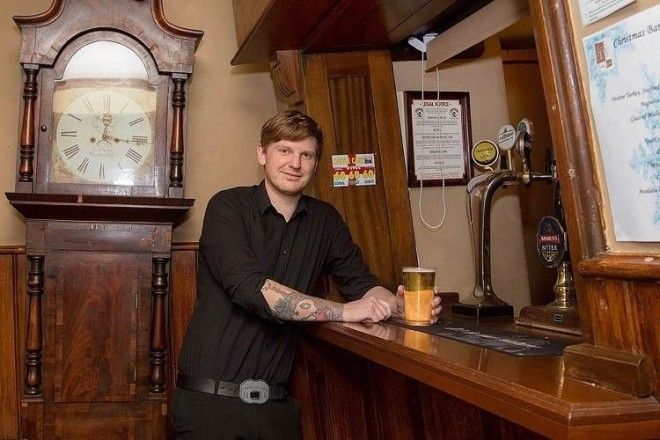
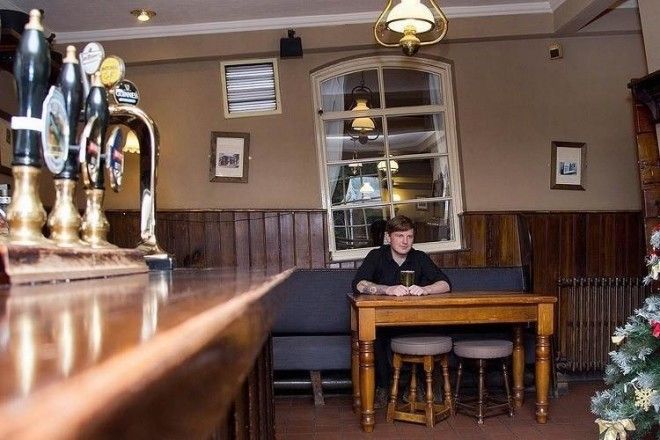
The pub’s manager, Dan Lewis, admits that the pub can be disorienting even before the drinks are downed: “”When I first came in,” he jokes, “I didn’t have a drink because I felt so dizzy.” Even the tables and countertop aren’t as stable as they might seem—coins and drinks alike might slide away if not watched carefully, making for a unique experience that attracts international attention.
“We get visitors come from all over the world—as far as Japan and Australia—and they just can’t believe it,” says Lewis. “They’re convinced it was designed like this but it certainly isn’t.”
For the price of a pint, you too can enjoy the optical illusions of higgledy-piggledy architecture. Just keep a firm grip on your glass.
